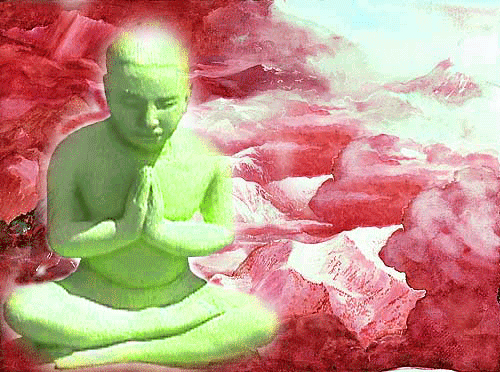WHAT IS MEDITATION
COMBINING SHAMATHA AND VIPASYANA

WHAT IS MEDITATION?
– Introduction – Working with the Mind
– Calm Abiding, Shamatha
– Special Insight, Vipasyana
– Combining Shamatha and Vipasyana
COMBINING SHAMATHA AND VIPASYANA
According to the Buddha and the many great masters following in his footsteps, we need to practice both single-pointed concentration and special insight. Slightly edited from geocities.com/dhammapada2all:
“In the Anguttara Nikaya Sutta (4.170): Venerable Ananda (one of the main disciples of the Buddha) says that monks and nuns who informed him that they had attained arahantship all declared that they did so by one of the four categories, i.e. there are only these four ways to arahantship (liberation):
– Samatha followed by vipassana – after which the path is born in him/her,
– Vipassana followed by samatha – after which the path is born in him/her,
– Samatha and vipassana together, simultaneously – after which the path is born in him/her, and
– The mind stands fixed internally (i.e. on the cognizant consciousness or ‘self’) until it becomes one-pointed – after which the path is born in him/her.
… Charity (dana) and morality (sila) are the positive and negative aspects of doing good (actively doing good and refraining from doing bad actions.). Likewise, samatha and vipassana can be said to be the positive and negative aspects of meditation. Samatha is the positive aspect which brings one closer to Nibbana. Vipassana is the negative aspect, because one sees everything in the world as it is with proper wisdom thus: ‘This is not mine, this I am not, this is not my self’ — as a result, one will naturally withdraw from and let go of the sensory world. In other words, samatha meditation pulls one towards Nibbana, in contrast to vipassana meditation, which pushes one away from the world.”
Or, as found in text from the Ming Dynasty by an unknown master; Taoist Meditation – Methods for Cultivation a Healthy Mind and Body, translated by Thomas Cleary :
“When you see reality, no illusions can confuse you;
when you develop stability, things cannot shake it or take it away. “
LINKS
– Teachings on Shamatha by Tranghu Rinpoche
– His Holiness the Dalai Lama’s advice on meditation
– Theravada texts on Vipassana: The Progress of Insight by Mahasi Sayadaw,
– also the Satipathana Sutra and Commentary
– source : buddhism.kalachakranet.org




